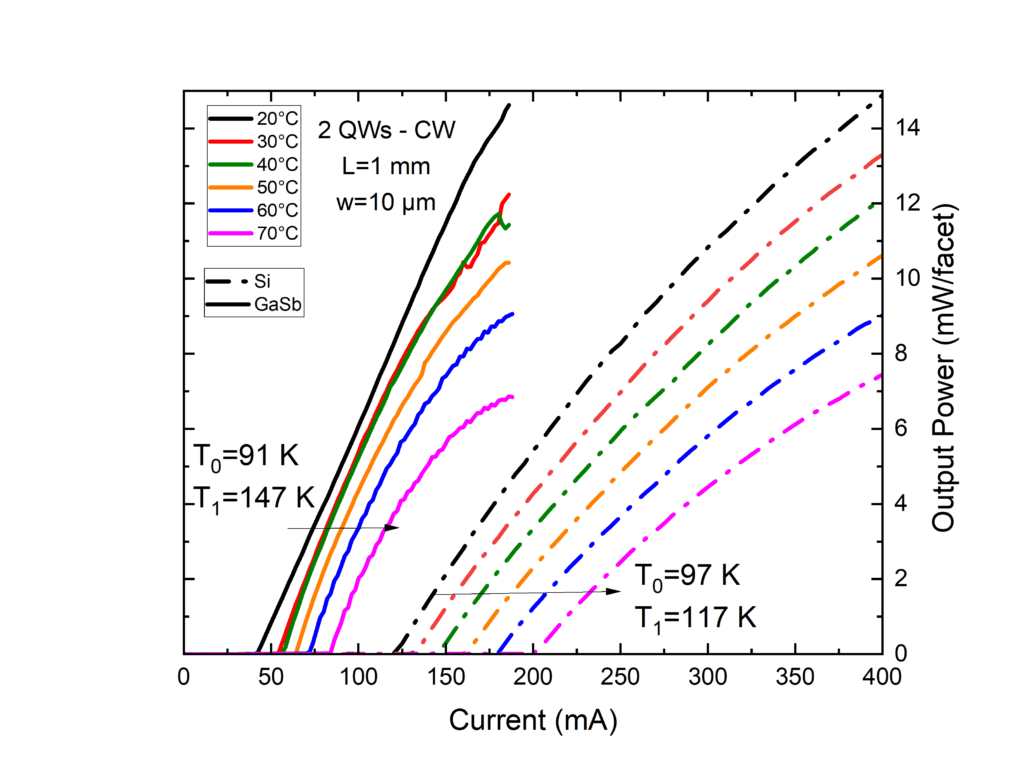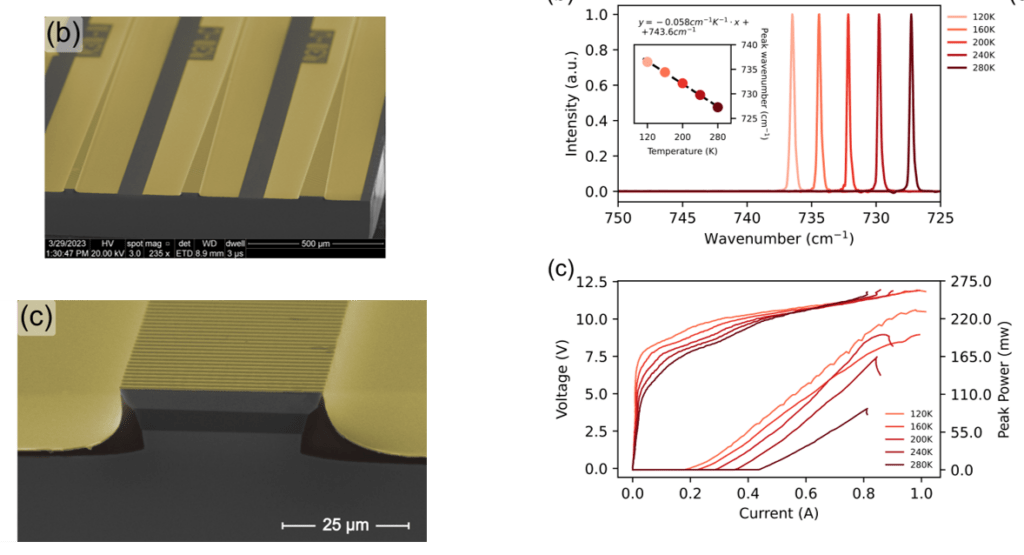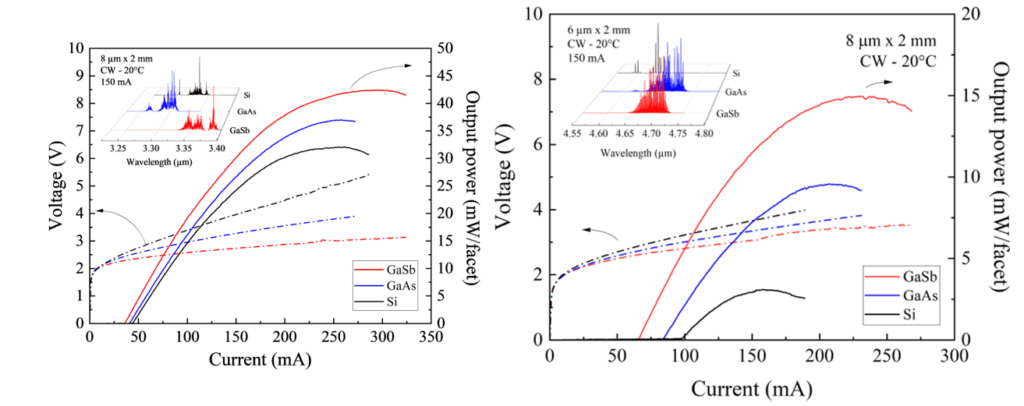Sb-based lasers
Staff: A. Baranov (Em.), L. Cerutti, J.-B. Rodriguez, Y. Rouillard, E. Tournié, A. Vicet
Post-doc: D. Diaz-Thomas (2021-2024)
PhD students: J. Fordyce (2020-2023), K. Kinjalk (2020-2023), E. Kniazeva (2020-2023), D. Pinto (2020-2023), M. Fagot (2022-2025), L. Kacel (2023-2026).
Projects: OPTAPHI (EU), EVOQUE (EU), PHC PROCOPE, ANR ACTIV-COMB, HYQUALITY (BPI), LASIDO (Région Occitanie).
Other collaborations: Telecom Paris, Univ. Surrey
Objective
This spectral region is particularly well suited for applications in gas spectroscopy, environmental monitoring, medicine, space communications, and defense. The three technologies being developed are based on quantum well diode lasers between 2 and 3 µm, interband cascade lasers between 3 and 5 µm, and quantum cascade lasers above 7 µm. Our research is aimed at improving optical properties such as single mode emission, increasing output power, and enabling direct integration of Sb-based lasers onto Si substrates.
Recent results
1. Type-I Diode Lasers on Si
We have investigated the effect of threading dislocations on MIR diode laser performance by comparing GaSb-based diode lasers grown on native GaSb and Si substrates. Laser threshold currents and temperature sensistivity are higher, while external quantum efficiencies are lower for diode lasers grown on Si (see figure below). We have shown that this is due to the fact that dislocations cause non-radiative recombination but do not introduce additional optical losses. This work allows a better understanding of the origin of the performance degradation and in terms of heterostructure design. More details can be found in Remis et al.

Fig. 1: Light – current curves taken at different temperatures from GaSb diode lasers grown on GaSb and Si substrates.
2. Taper and top metal grating on InAs/AlSb QCLs
We have developed distributed feedback tapered quantum cascade lasers for emission at 14 µm. The fabricated tapered QCLs exhibit output power scaling with increasing active zone volume and allow divergence angles to be reduced as small as 4.2° with diffraction-limited beam quality (M2 ≈ 1). Using a first-order Bragg grating for single longitudinal mode selection, continuous-wave operation has been demonstrated up to room temperature with side-mode suppression ratios greater than 20 dB. More details can be found in Pinto et al.

3. ICL on GaAs & Si: Dislocations tolerance from 3.3 to 4.7 micrometers
Recently we have shown that ICLs emitting at 3.5 µm have a tolerance to high dislocation density (5×108 cm-2). This work explores the tolerance window of ICLs towards longer wavelengths. To this end, we have designed and fabricated ICLs covering the wavelength range from 3.3 to 4.7 µm, grown simultaneously on native GaSb substrate and on mismatched GaAs and Si substrates. The ICLs grown on the different substrates exhibit very similar threshold currents at room temperature in continuous wave operation. Aging of these ICLs present no degradation of the initial threshold current and optical power after 500 h. Thus, ICLs emerge as a promising light source with high performance and long lifetime devices on mismatched substrates. More details can be found in Fagot et al.
